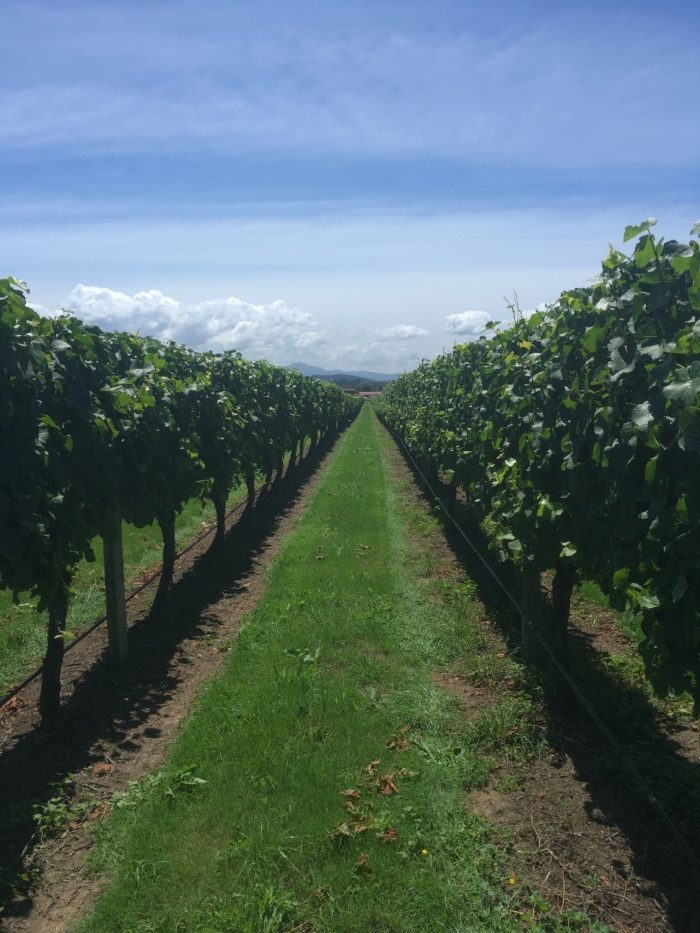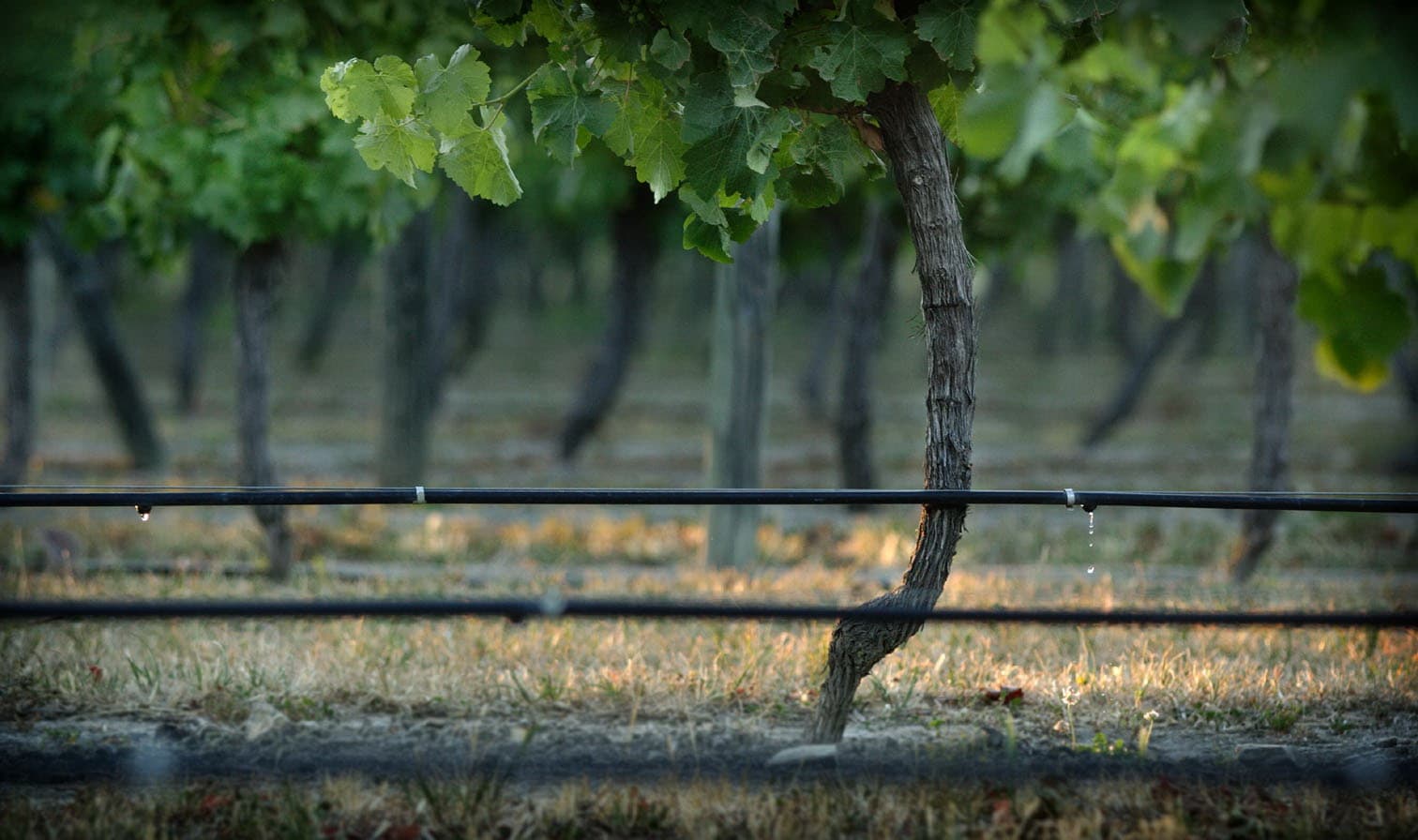Optimising irrigation in New Zealand vineyards
Irrigation is required in most vineyards around New Zealand to maintain vine growth and productivity. Too much irrigation, however, can lead to higher farming costs because of the need for many passes to trim, spray weeds, pluck leaves, and thin crop. Excessive irrigation also leads to lateral growth that makes spray penetration difficult and reduces fruit exposure, both of which promote disease. Scheduling irrigation so that the vines receive adequate, but not excessive, water is a challenge for growers.
Most growers use some sort of soil-based probe to schedule irrigation, however others still water on a calendar-based schedule with no knowledge of whether the vines need it or not. In the 2017-18 season a study was set up in Sauvignon blanc and Pinot noir vineyards in Marlborough, Chardonnay and Merlot vineyards in Hawke’s Bay, and Pinot noir vineyards in Central Otago. Each vineyard was divided in two large sections that could be watered independently. The study sought to compare the vineyard’s normal irrigation regime, which for most was soil probe-based, to irrigation based on measuring the vines’ water potential.
Water potential can be thought of as the blood pressure of the vine. It measures how hard leaves have to pull on water to remain hydrated. Water potential irrigation thresholds were set up that were specific to each variety, and no water was applied to the “deficit” side of the trial until the vines reached these values, indicating that they needed water. These thresholds changed based on the phenology of the vines.
In the “deficit” treatment in all varieties, irrigation thresholds prior to and at flowering were quite low, so that the canopy could be developed and flowering could proceed with no water stress. After set in all red varieties, the threshold was changed to purposely induce mild to moderate water stress before irrigation in order to produce smaller berries and to increase quality. In whites, the threshold changed at veraison so that vines were brought to the edge of stress to stop lateral and shoot growth, but not so dry as to slow photosynthesis and delay ripening. The aim was to reduce yield naturally in reds because of smaller berries so that costly hand thinning was not necessary. In whites the aim was to produce the same tonnage of equal quality fruit using less water. Wines were made at industry scale (at least 500 kg ferments), so that effects of reducing irrigation on wine quality could be determined. The stem water potential irrigation thresholds for each variety are found in Table 1

Table 1: Stem water potential irrigation thresholds for the deficit treatment
In general, the deficit irrigation applied less than half of the water compared with the control, often substantially less (Table 2). This reduction in water did not lead to less canopy growth, as the percent of gaps through the canopy is similar at veraison in most vineyards (Table 2). Usually, reducing water did not lead to a reduction in yield, though it did in a few cases (CH1 and SB1). In most cases when Brix differences were found, the deficit had higher Brix than the control, suggesting faster ripening when less irrigation was applied (Table 2).

Table 2: Percent gaps at veraison from canopy image analysis, seasonal irrigation, rot severity at harvest, yield per vine, and Brix from the Hawke’s Bay and Marlborough sites. Values are means of ten vines for canopy gaps, rot, and yield, and of five 50 berry samples for Brix. Irrigation amounts were calculated based on flow meters in the driplines in each vineyard half. Values in bold with different lower case letters from a vineyard denote significant differences between treatments at the 95% confidence level. *Crop reduction was carried out by hand in the control, but not the deficit treatment.
At the ME2 and PN1 vineyards manual crop thinning was performed on the control, but not the deficit treatment, leading to higher yields from the deficit in these vineyards (Table 2). However, the deficit fruit in both vineyards had similar Brix at harvest, suggesting that by imposing water deficit in red grapes, a larger crop can be ripened to the same quality, while at the same time eliminating or reducing the cost of crop adjustment, which is often substantial. Reducing irrigation also led to less weed and canopy growth, which could eliminate passes for spraying and trimming (Figure 1).

Figure 1: An image of the SB3 vineyard with the deficit vines on the left and the control on the right. Notice the substantial difference in undervine weed growth brought about by irrigation on the control.
This is the first season of a multi year project, so it remains to be seen how consistent these effects are. It also remains to be seen what the effect of differential irrigation was on wine quality, but that will be assessed in the next few months. The results thus far are exciting, and suggest that being more careful with water, we might be able to lower the cost of farming, reduce labour and chemical inputs, and increase wine quality at the same time
This article first appeared in the October / November 2018 issue of the New Zealand Winegrower magazine.

















